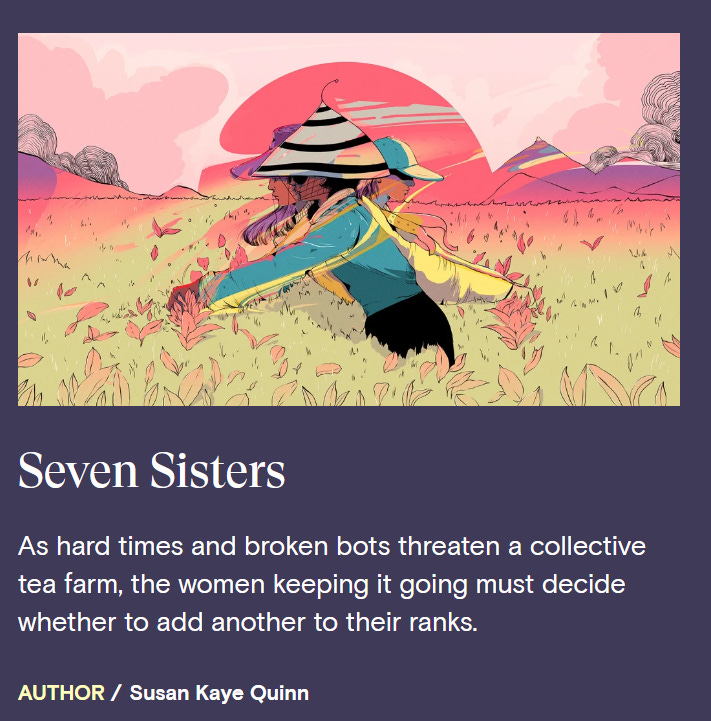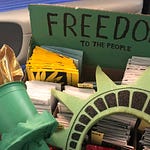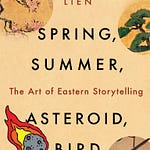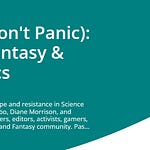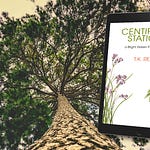Hello Friends!
Welcome to Bright Green Futures, Episode One: Stories to Build a Better World.
I created Bright Green Futures to lift up stories about a more sustainable and just world and to talk about the struggle to get there. Today we’re going to talk about why we even need a podcast/newsletter like this. Why new stories are key to building a better world.
Stories We Tell About the Climate Crisis

In 2022, a climate-driven polar vortex worked loose from the Arctic and suddenly dropped the temperature across the Northeastern United States. The poster for The Day After Tomorrow—a movie about a climate apocalypse—quickly became a meme. The poster shows a frozen Statue of Liberty against an icy New York city skyline, and the meme had crossed out the words “The Day After” leaving just… “Tomorrow.” As in, the climate apocalypse had arrived, and we were suddenly part of an overly dramatized Hollywood version of reality.
And this moment, this meme, captured for me the way so much of our imagination is framed by prior storytelling, stories that are already familiar to us.
What are these stories we tell about the climate crisis?
we’re doomed
one day the apocalypse will come and a (male) hero will save whoever is left
violence will be the most important skill in this new Mad Max world
<…crickets…> (ie we don’t talk about climate at all, especially in fiction)
What stories do we need to tell?
That is the question.
There’s a growing understanding that apocalyptic stories—the ones meant to shock us and get us to act now before it’s too late—are insufficient. Stories about a lone hero saving the day won’t help us work together to fight a global catastrophe.
Barriers to Imagining a Way Out
As the world burns through the hottest year in 100,000 years, many people are stuck in denial, doomerism, or helplessness. They literally can’t imagine how we could fight our way out of this crisis. Or they believe geoengineering or a magic future technology will save us—basically we’ll invent our way out of the consequences of our inventions. Worse, some are immediately on board with eco-fascist ideas about eliminating the “wrong” people to save the world for the “right” ones.
Disinformation and fossil-fuel propaganda carry a lot of the blame—those who profit from the status quo love to tell stories about how powerless we are. They prey on people’s desire to do good, shifting blame to individuals (you didn’t recycle enough!) while hiding chemical factories dumping PFAS into our rivers and methane into our air.
But it’s not just malicious actors that keep us from imagining a way out of the climate crisis. Humans are not wired to deal with slow-moving globe-spanning crises. Our brains want to ignore the catastrophe at the horizon as we try to get through the day. Worry about the climate becomes just part of the background hum of anxiety about our daily existence.
Turns out, when your brain is stressed like that, your vision narrows, you become hyper-aware of threats, and your imagination shuts down completely—there’s no advantage to planning for a future that may never arrive. Evolutionarily speaking, that’s a solid strategy for getting yourself out of a crisis, like a wildfire. But it’s completely messed up if you’ve got to imagine new ways to work together to stop, say, cattle-driven deforestation in the Amazon before it tips permanently into savanna and wrecks the world’s biosphere.
Instincts in Short-Term Crises
In a short-term crisis, we move on instinct, which is actually not bad. We have good instincts. We pull together, help one another out, take care of the vulnerable, and see to everyone’s immediate needs. Food, water, shelter. A hug, a held hand, a comforting blanket for the scared doggos and little kids. But if you ask Hollywood, they’ll say (in movie after movie) that this is when we’ll turn on each other. Politicians use that story to trot out the riot police. But that’s not how it works in real life. Hollywood’s exciting stories of violent marauders in a crisis cannot compete with our instinct to grab our boat and help a little old lady and her cat stuck on their roof in a flood.
It’s when the crisis is chronic that we get in trouble. When the problem stretches on and on, especially when it’s massive and complex and terrifying… that’s when imagination fails us, and we default to the stories we know, the ones we’ve heard repeated, again and again, so they must be true, right?
We’re doomed. A hero will save us. Some magic will come and fix everything.
But those stories are mal-adaptive for surviving the climate crisis.
We need better stories. Ones about cooperation and compassion. Ones that show us working together to fight the forces of corruption. Stories that identify the real problems, the actual villains, and even more importantly, weave the bonds of connection between each other, and between us and the living, breathing world all around us. Better stories about the climate crisis will arm us for the real challenges we face—including how to deal with numbing eco-anxiety—and help us envision possible paths forward to a more sustainable world.
This is the power of fiction. Brilliant non-fiction stories about the real-world fight (movies like Dark Waters and The Human Element) inspire us, but they’re constrained to what’s already happened. Fiction allows us to imagine where we want to go… and how to get there.
The Possibilities of Hopeful Climate Fiction
Here’s a snippet of my story, Seven Sisters, that took 3rd place in Grist’s Imagine 2200: Climate Fiction for Future Ancestors contest in 2022:
“Pushti’s bringing home another stray. Wants them to join the family.”
Mama brightened. “Who is it?”
“Refugee from the Brazilian drought. That’s all I know.” Latoya waited, but her mama just nodded to herself and kept that smile. “Mama, we can’t afford it. Not right now.”
She whipped her sharp brown-eyed gaze to Latoya’s face. “Can’t afford it? You weren’t old enough to remember when things got in the negatives, baby girl. Don’t tell me about poor. Whoever this refugee is, they’re coming from a lot worse than we have.”
“I know, but…” She hated arguing the practical side, but someone had to. “New Orleans can take them. They’ll get Basic and all the rest. The center can support them through the transition. Maybe we’ll be on our feet by then.” Although Latoya couldn’t see how. This refugee wouldn’t help with the harvest. They were usually a mess when they arrived and needed care, not to be thrown into the blistering sun to work the fields. Mama wouldn’t stand for that, and neither would she.
Mama had narrowed her eyes like she thought Latoya had been out in the sun too long already. “What do you think I founded this family for?”
“I know —”
“Then you know that we help who we can, when we can. And I’ve never seen that be convenient at the time.”
“This is different.”
“Is it?” The challenge in her mother’s eyes was quickly eroding her resolve.
Latoya sighed. “Pushti will be at the meeting tonight. We can put it to everyone then.”
“Pushti thinks this one could be family.” She said it like that settled the matter.
Maybe it did. Her mother and Pushti, put together, were a Category 4 storm making landfall: you could batten down or get out, but the storm would have its way in the end.
Latoya nodded but without conceding. She’d think more on it, which was what Mama usually forced her to do. “I’ll come get you tonight.”
“Make sure you do.” Then she reached for her handheld and scowled.
The word game could take the brunt for a while.
When I wrote that story, I was holed up in a tiny house on the Chesapeake Bay, fighting my own personal storms that had swept away my ability to write anything at all. This story—like every hopeful climate fiction story I write—is set in a near-future world where we’re hip-deep in fighting the climate crisis. We’ve made some progress, but the battle is long and hard, and we’re going to be in the middle of it for a very long time.
As I recently told some high school students who were writing their own climate fiction, I don’t tell stories about climate change: I tell stories about how we have to change.
These stories open up space to imagine the possibilities.
One of my favorites is T.K. Rex’s A Holdout in the Northern California Designated Wildcraft Zone.
Here’s a short excerpt:
Attempt disarming demeanor. Raise tentacle, wave in friendly manner. “Sorry, I didn’t mean to startle you.”
Holdout stands still, crosses arms, glares? Glares. Holdout may be hostile. “I suppose you’re one of those rewilding drones they sent up here to get rid of us.”
“I only wanted to inform you that this region has been designated as a wildcraft zone, and is being rewilded for carbon sequestration and food production.”
“And I’m just supposed to pack up and move to the citystate, is that right?”
“My apologies, I am not here to coerce you. Merely to make you aware of the situation.”
“Well, I’m aware. Now go away.”
“Understood.”
Holdout squints at me. Unfolds arms, shoves hands in dress pockets, which are — analyzing — full of pinecones. Holdout turns, continues walking north/northeast.
Question for network: Rangers close?
Yes, six Rangers riding north on Highway 101, 3 miles west, horseback.
Equipped to relocate one person?
Confirmed. Note: Three of six Rangers in the party are known to use excessive force with holdouts.
Analyzing. If holdout remains here, Rangers will eventually force her to leave. Due to holdout’s advanced age, an altercation could easily turn fatal. Best course of action is for me to convince her to leave of her own volition before Rangers find her. Decision: Do not summon until a reasonable effort has been made.
T.K.’s story is an absolute delight. I challenge you to read it and not come away with a lighter heart. But it will also challenge you to think about the costs of rewilding and how, perhaps, humans have a place in tending the wilds and not simply vacating them.
Both Seven Sisters and Holdout will be in a special collection of Imagine 2200 stories published by Milkweed Editions, the publisher of Braiding Sweetgrass, coming this fall, but you can also read them online right now.
Building a Sustainable and Just World
These stories not only imagine possible futures, they also deconstruct why and how so many stories uphold the status quo in deep structural ways. Not just the obvious narratives of the story itself, but whose story gets told, the settings and characters, even the structure of the story and the narratives devices used to tell it.
Here at Bright Green Futures, we’re going to talk about climate stories and storytelling. We’ll discuss how we survive the Anthropocene, how we fix the problems, and how we renegotiate our relationships with nature and with technology. We’ll talk to the writers who are elbows deep in creating these stories and build a reading list to inspire you. And we’ll talk about the challenges we face, both in tackling the climate crisis and in telling stories about it.
In doing so, compassion will hold a central place. Everyone wants—and deserves—clean air to breathe and water to drink. A sustainable world is a just world, and we can’t build it out of the same imperial stories of conquest of nature and people that the world of cheap petrochemical energy was built upon.
We won’t get to a sustainable world by locking people out. Technology can help, but it won’t save us. We’re far from doomed, but we are in serious trouble. All we really need is to decide this is a problem we want to fix, and then put our smarts, our resources, and our hearts into finding the way forward. Together.
Sounds like a great story to me.
And this is a story of “us” because none of us are doing this alone. Even on this podcast, I might monologue some essays like this, but I’ll also have storytellers as guests and panelists, and like any good story, every single person who reads or listens is part of it. Especially those share these hopeful climate stories with their friends and start to take steps to change the world.
We’re co-creating the future together, friends.
Let’s get to work.
Bright Green Futures is a weekly newsletter/podcast. Check out the Featured Stories and Hopeful Climate Fiction lists for further reading. The best way to support the show is to subscribe and share the stories with your friends.
LINKS Ep. 1: Stories to Build a Better World
Seven Sisters by Susan Kaye Quinn (text, audio) (also in German)
Holdout in the Northern California Designated Wildcraft Zone by T.K. Rex (text, audio)
Metamorphosis collection (print only preorder from Milkweed Editions)
SUBSCRIBE TO WIN STICKERS
In celebration of the launch of Bright Green Futures, I’m giving away FIVE of these amazing stickers. Subscribe to be entered to win!
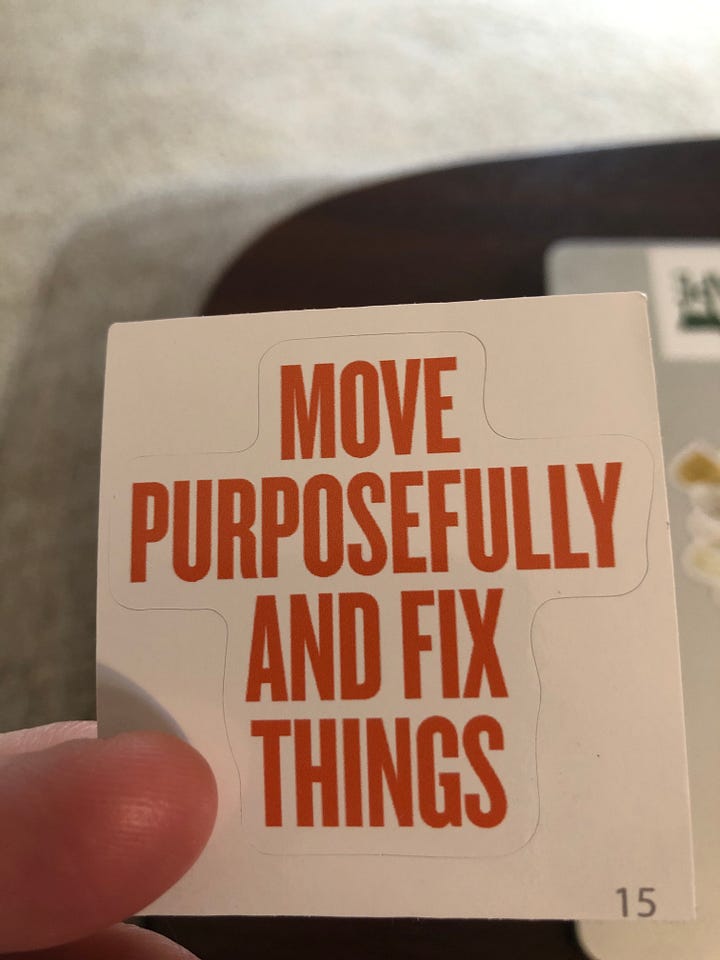

PLEASE SHARE
Tiktok1, TikTok2, TikTok3, Facebook, Mastodon, Instagram
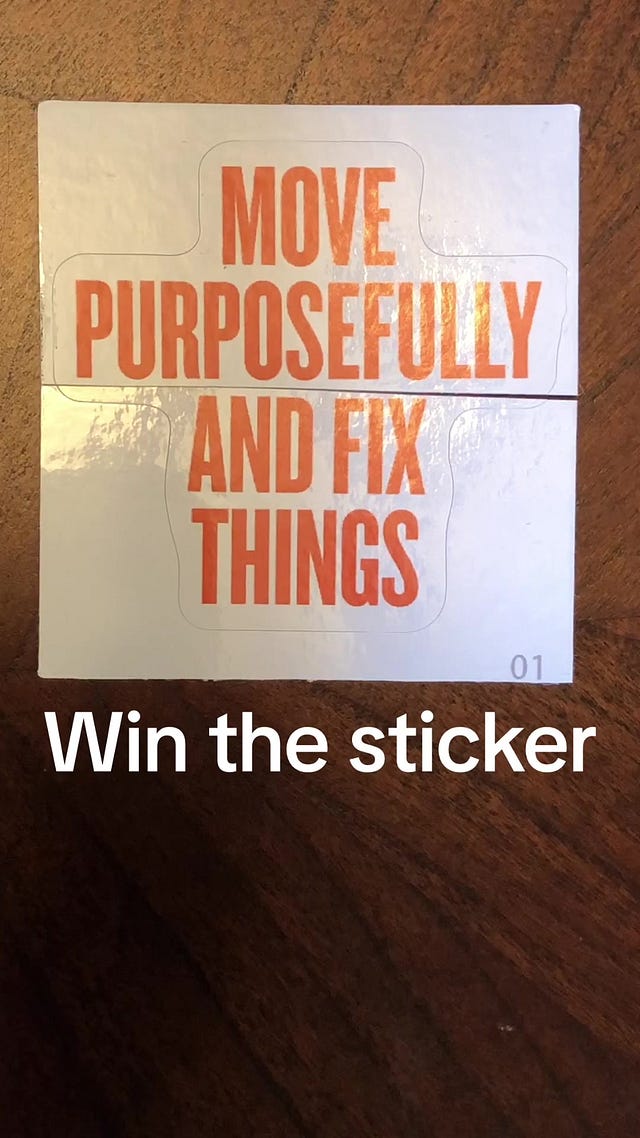
 Tiktok failed to load.
Tiktok failed to load.Enable 3rd party cookies or use another browser




